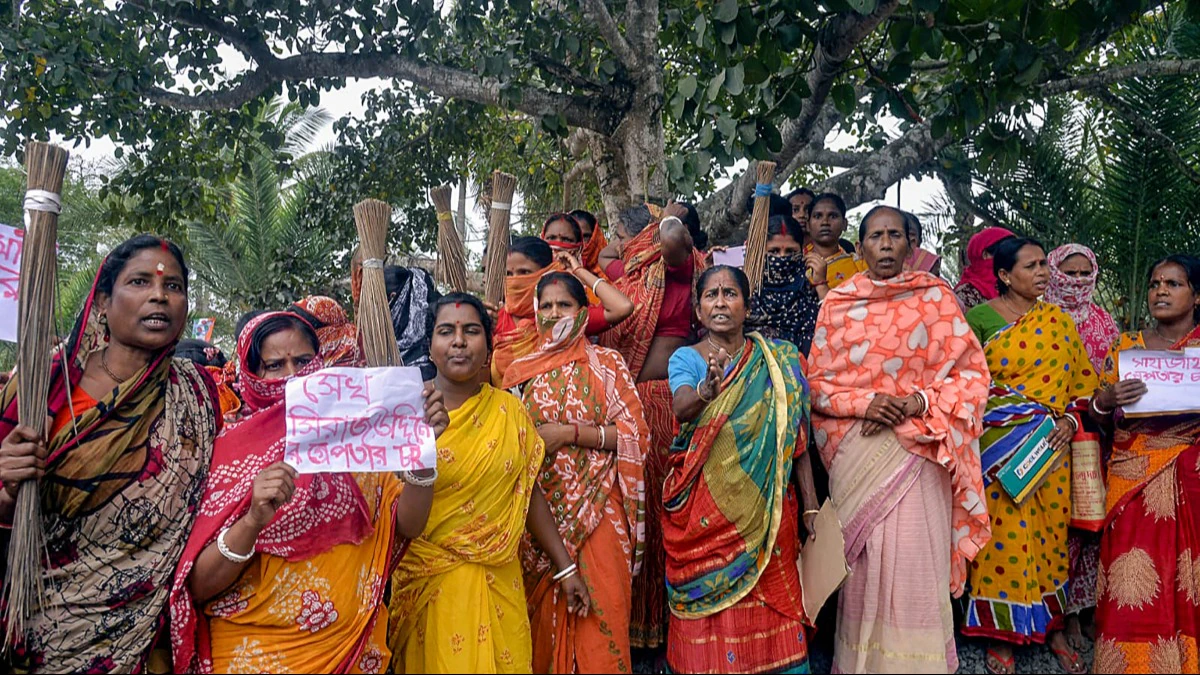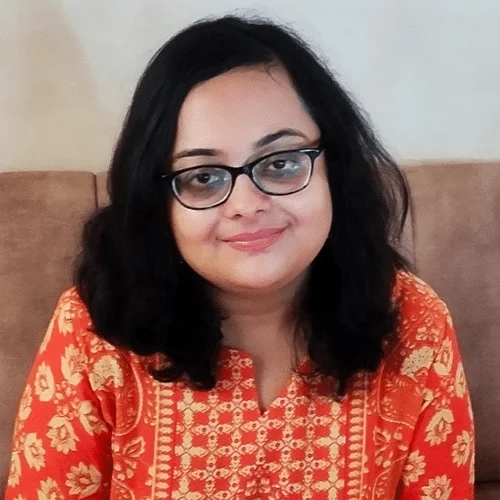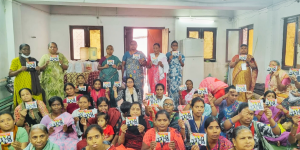‘Sandeshkhali Shows That Women Are Not Passive Beneficiaries of Welfare Schemes’
The fact that they are resisting exploitation ruptures the popular political image of marginalised women, says political scientist Proma Raychaudhury
- Ankita Apurva

Videos of women accusing local strongmen and Trinamool Congress (TMC) leaders of sexual harassment and land grab surfaced from Sandeshkhali, a village in West Bengal’s North 24 Parganas region, early this month. The main accused, Shahjahan Sheikh, was arrested yesterday after absconding for days.
Chief Minister Mamata Banerjee started by playing down the women’s stories and accusing the opposition—mainly the Bharatiya Janata Party (BJP) and the Rashtriya Swayamsevak Sangh (RSS)—of inciting political unrest. Later, the state set up an all-women police team to investigate and also an outreach programme to hear the survivors’ grievances.
With elections around the corner, Opposition parties, most notably the Communist Party of India (Marxist) and the BJP, have questioned the TMC government’s response to the crisis. BJP leaders alleged that Sheikh allowed Rohingya immigrants to settle in Sandeshkhali and that these refugees harass local “Hindu Scheduled Tribe” women.
Probable instances of molestation, land-grabbing and forced work have been discovered by the all-women police squad during their interviews with over 70 women across several villages. However, none of the state investigating teams have found any evidence of communal conspiracy.
The survivors have alleged that the police have been protecting TMC musclemen despite complaints. And it was only after a woman testified in a court that the police filed accusations of “gang rape” and “attempt to murder”.
Behanbox spoke with Proma Raychaudhury, an assistant professor of politics at Krea University and a specialist on gender, political institutions, and populism, on the implications of these protests by the women and the state’s response to them. She believes that these protests have shaken the stereotype of women as passive voters and established them as political beings with agency.

Violence has been part of the political landscape of West Bengal for many decades. Can you trace its history, especially gendered violence?
Violence has been quite endemic to West Bengal’s political culture and this is irrespective of parties. The renowned political scientist Dwaipaiyan Bhattacharya gave this idea of ‘party-society [a society divided by political affiliation]’. So, [in Bengal] unlike other Indian states, particularly in the north, caste is not exactly a determinant of electoral vote. These days we do see a consolidation of some oppressed caste votes or upper caste votes but they are not overtly influential as they are in the northern states such as UP, Bihar, Rajasthan, and so on.
But of course, no political situation can tolerate a vacuum and that is where the party comes in. And this has been happening even before the CPIM came to power in 1977. Even during the years of the Congress, you saw a lot of murders related to political affiliations, particularly in urban West Bengal, in industrial sectors like the jute mills and so on. And yes, gendered violence was also built into this political violence.
Sexual violence is often used just before elections to intimidate Opposition candidates. Here is an example: in Bengal when the CPIM was in its heyday, during local rural body elections, rival candidates would often threaten each other, particularly the CPI, by gifting the wives of their opponents a white sari, symbolising widowhood. It was meant to intimidate the candidate.
Now, [in Bengal] irrespective of parties, political leaders make popular speeches where they say: ‘Oh, we will destroy the houses of CPIM supporters or TMC supporters’. Since 2017, we have seen a lot of communal flare-ups, low and sometimes high intensity, driven by the polarising rhetoric of the BJP leaders. And it makes things worse because Bengal is one of the two states that had the experience of being partitioned. All of it is too real and in public memory such as the millions of refugees from the then East Pakistan, for instance. This is being revived and given a new colour by the BJP and the Sangh Parivar.
Then gendered violence, like [of the kind seen in] Sandeshkhali has also shown up in recent years. Even when women stand for elections, particularly in panchayat and municipality elections, candidates from the ruling TMC target them, their saris are torn or they are beaten up. So the women work under a whole lot of adverse circumstances.
What does Sandeshkhali tell us about the gendered nature of political violence?
It didn’t just start with TMC, as I said. But of course, under the TMC, a very crucial thing happened.
During the later years of the CPIM rule too, that is the 90s and the early 2000s, there were a lot of local strongmen who controlled a substantial part of the local rural economy also, but they were never promoted as leaders, given party tickets. Getting CPIM membership is quite difficult, compared to other parties.
But unlike the CPI, CPIM or the BJP the TMC is not a party with an ideological code or cadres. It is a popular party where all authority is concentrated in one person. But it is impossible for one person to govern the entire state with such a high population density and area without handing power to local strongmen. The TMC gives them tickets and makes them leaders directly, which changes the game. Even during the CPIM’s time, state power would be used to bail out local strongmen [who misbehaved] but if they became too much for the party they would be disciplined or jailed or ‘encountered’. But this is not happening under the TMC because of the lack of party discipline.
So all these local strong men who actually rose from very humble positions, they became party leaders, at the Zilla Parishad and got plum posts from the party as well as from the administration. That also shields them from police action.
In Sandeshkhali, we see a sort of long-term understanding between the police, the local strongman leader, and the civil administration. All of them knew what was going on but because the local strongman delivers votes and funds to the party they all decided to stay quiet. It is difficult to say how much of it is true, but given our political position, where we usually believe the women – and so many women are talking about it – then of course, there must be a grain of truth to it.
Most of these women are talking about how their lands were taken away. And this is an area which is an island surrounded by saline water, so even farming is difficult. What people like Shahjahan Sheikh and his henchmen would do was to just flood the fertile farming area with saline water. And then they would start their own fish cultivation there which is very profitable.
Sheikh used to be associated with the CPIM before 2011. But at the time there was a very strong Mahila Samiti in every village, which was the part of the party itself, and this women’s wing of the party was strong and vigilant about gendered violence. I’m not saying that gendered violence never happened back then. But there was some vigilance, which was absent during the TMC’s time. There were no autonomous women’s organisations making sure that the women are safe and that also left the field open for these strongmen to take advantage of the women. It seems like a rape regime because it’s been going on for so long and it has the sanction of the administration. So whenever the women would go to the police to complain, they would essentially tell them ‘talk to your rapists’.
It is quite horrific, what has been happening and the BJP’s response is to polarise the issue – make it seem like the henchmen are Muslims, the perpetrators are Muslims and the victims are Hindu. But that is not really true from whatever we are seeing: there are Hindus among the perpetrators and Muslims among the victims as well.
What are the implications of gender violence especially in respect to marginalised communities?
Almost all these women are very marginalised, with multiple marginalities, from Adivasi and Scheduled Caste communities and they bear the burden of caste, low economic status, and also gender. And as is often the case, women from marginalised communities do bear the brunt of the gendered violence. As far as I know, even the perpetrators don’t come from higher castes. They are Muslims, and also Hindus, and they come from that area itself. But because they have party sanction, they take advantage of the women. And there’s this age factor – they choose more younger women.
Of course, caste played an important role. But I’m not sure if it played a very specific role because the general population belongs to a similar caste structure or similar caste layer. Then, again, I haven’t been there personally. So there are these things that can only be known perhaps, if you’re a part of that society.
But gender is certainly an important aspect of how power was demonstrated. So whenever these women would plead with the men to leave them or their menfolk alone, they would beat up their children and they did things because they could.
There’s also this aspect that a lot of the menfolk actually are migrant labourers. So, they work in Orissa, Andhra Pradesh, Gujarat, Kerala. It is the women who remain there taking care of the family and doing whatever little they can to earn their livelihood. So, that is another aspect there is this feminisation of labour there. Women are exploited and because they belong to a lower social order, it is easier in a way to exploit them.
The allegations and reports coming out of Sandeshkhali point towards a political nexus about the ways in which such a system impacts women.
This is again complex because under TMC’s rule, there have been a lot of cash transfer schemes. Welfare schemes are specifically dedicated to women and this has also affected how women vote for the party. Like in other states, women generally tend to vote these days for the BJP because of centralised welfare delivery schemes. But in West Bengal, it is usually the TMC, which is the beneficiary of the women’s vote. I think women here have been seen as passive beneficiaries [of welfare schemes]. But now that these women are coming out and resisting [exploitation] it ruptures that image. Then there were allegations of sexual abuse by party leaders. ‘You are benefitting from this scheme, so you have to serve us.’ The benefits have increased to Rs 1000 a month or so and that means a lot to these women so they bore this abuse.
What are your concerns about the way the state and central governments have responded to the women protesters?
I think the state government has been sort of disbelieving them. And that is very concerning, and sort of showing them as having malicious intent to demean the government and demean the leaders [of the protests]. And that is, for me, it’s quite disturbing. The central government is sending their teams but that is [leading to] polarisation. So when Smriti Irani talks about how [only] Hindu women are being targeted, where is the proof? But at least they’re drawing attention to the whole affair. CPIM leaders have been visiting as well. The State Police have arrested CPIM and BJP leaders, but they haven’t given any reason why.
Recently TMC MLA Narayan Goswami said that the Sandeshkhali women protesters don’t look like SC/ST women because they are ‘pretty and white skinned’. So what do you think this tells us about the administration’s de-legitimation of the protests led by marginalised women?
The government is delegitimising them and also treating them as stereotypes of what marginalised women look like. It shows the regressive notions that often inform the thoughts of public and political representatives.
Can you tell us about the role of women’s protests in Bengal and whether they have historically included or excluded the women from areas such as Sandeshkhali?
Not exactly because it depends on which class or section of society you’re coming from. So, the earlier phases of women’s movement were centred mostly on the experiences of urban, educated upper caste women and upper class women. But later on, leftist activists went to the villages [and interacted with women there]. So whenever we look at the experiences of women who participated in the Tebhaga movement, or in Naxalbari, etc, we do see narratives from marginalised class or caste women. But then again, even there, there is the privileging of women from urban classes, who served as educators to these women. That has been a lacunae but at least with the Left, a lot of experiences of the struggles of rural women were brought up and discussed.
How will these protests change the state’s social and political dynamics?
I am not too sure because it’s a small area, it covers three villages, or three panchayat areas or something. So I think time will tell.
We believe everyone deserves equal access to accurate news. Support from our readers enables us to keep our journalism open and free for everyone, all over the world.




